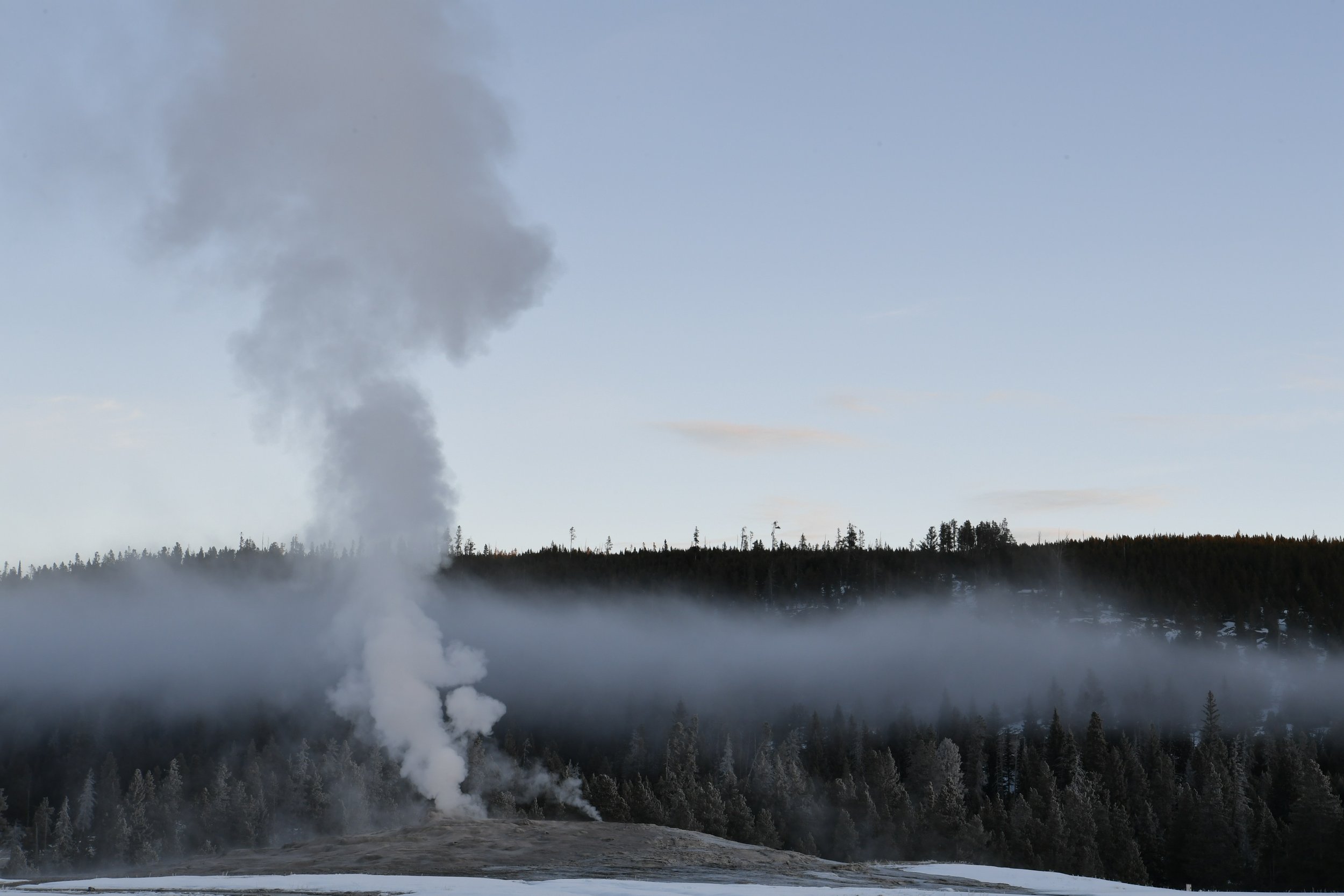Under Duress
Standing in front of a column of superheated water shooting dozens of feet in the air is a good time to wonder what happens when something is under pressure long enough with no room to escape. Or rather, no room to transform into what it needs to be in order to withstand that pressure.
For the water heated by underground pockets of magma beneath Yellowstone National Park, it needs to be allowed to become steam. Or so said the information panels in the visitor center. As for me and what I need to become when under pressure… I’m not entirely sure. My attempts to create a guide for myself have not been as effective as those of the National Park Service.
“Forming a geyser requires heat, constriction, and pressure. I nodded my head as I read the information panels because this is also a state of affairs that I find myself occupying with frequency.”
Forming a geyser requires heat, constriction, and pressure. I nodded my head as I read along because this is a state of affairs I frequently find myself occupying. Both end in a boom and a shower of fiery hot mess.
When the geyser’s water erupts, it is exposed to air and cold (most things are colder than it), and chills out pretty quickly. Its head of steam evaporates, some which blooms into vapor. With the wind and air pressure and other meterologic conditions, it will return to the earth as rain. Those drops might fall right back down, maybe a few inches from where I was standing, or they might make it all the way across the ocean. They might do so in the next few days or in a year or two, based on what kind of current they ride.
Some of that water never makes it to the atmosphere. It falls down right away to join the acidic runnels that become streams that become the Firehole River (which never freezes), that becomes another river that might go to the ocean. Some of those drops may be resorbed into the earth to become a part of the water table which feeds the cycle all over again.
It probably never seemed like the water would escape its angry underground trap, but it did. When that happened, it flowed away in liquid or gaseous form and the power held in its tiny droplets was greatly lessened by its release.
The metaphor is clunky, but there’s a little something to it. Maybe all those things aggressively bumping into each other in my stress holding chamber would be better off shot into the air and left to go their own way.
“The geyser and its immediate area are never precisely the same after an eruption. They are sculpted, beautifully, with microscopic changes. ”
They’ll make their way back, of course. Of course. And their release might be spectacular. People don’t come from everywhere to see me lose my top but they do travel from far and wide to watch Old Faithful. I toted my whole family there, and so did the people in the lobby with their infant and toddler. So there’s something alluring about watching a disaster unfold, whether it’s a spurt of water in the middle of Wyoming or a meltdown in grocery store aisle seven or a fight over guest lists on reality TV.
Once all that water is released, some of the dissolved minerals pile up to form a stone called geyserite. Even after the eruption is finished, there are bits left in the aftermath that pile to form terraces, and those terraces are spectacular sights to behold. They show age in the slowest kind of way, containing the kind of wisdom from from millennia of sunrises and sunsets. The geyser and its immediate area are never precisely the same after an eruption. They are sculpted, beautifully, with microscopic changes.
“So even after the eruption, there is an entire creche of life built in its aftermath.”
The terraces, the hot water, and the minerals form an entirely different environment than the nearby forest. There is warmth, humidity, and moss growing on stone in the middle of a place whose winter reaches negative thirty on a fairly regular basis. There are plants growing that never would have been able to survive here otherwise. The same is true of the wildlife that feeds on those plants. It’s no mistake that the bison hang out in areas close to the thermal features because the grass is lush and easier to access when the warm ground has done the work of uncovering its tender roots from the constant snowfall.
So even after the eruption, there is an entire creche of life built in its aftermath. If the earth held all of it in, that micro environment wouldn’t exist. The same is true of me. Perhaps in the wake of my own eruptions – whether they are witnessed or not – I have cleared the decks to allow things to grow that I didn’t even know were possible.
Inspired by events in Yellowstone National Park
on the land of 27 current tribes with historic connections to the lands and resources now found within Yellowstone National Park (source: NPS)


